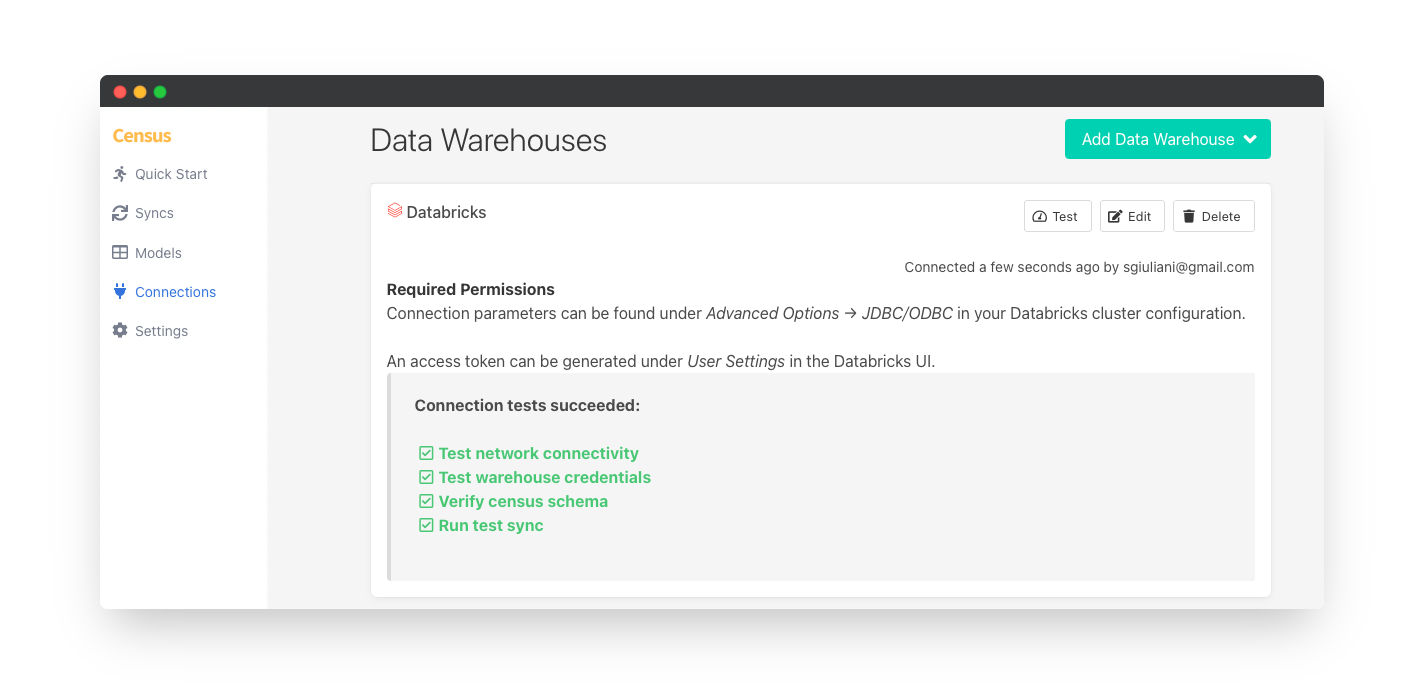Since our public launch, Databricks has been one of the most requested data sources. That elusive fifth warehouse. And with their Delta lake product widely available, we knew this was something we wanted to integrate.
For those of you unfamiliar with Databricks, they are most famous for championing Apache Spark and making the old world of Hadoop-driven “big data” orders of magnitude easier & faster. As they’ve grown, they’ve added a number of offerings to their stack, all of which help move our industry from focusing on data processing towards AI & ML outcomes. In this regard, our missions are deeply aligned. The whole point of Census is to turn your warehouse (or shall I say "lakehouse") into an operational hub that helps you turn data into action.
So we’re excited today to announce our Databricks Delta Lake integration 🎉

Delta Lake brings a built-in storage layer for Spark, which expands the platform to match other cloud data warehouses like Snowflake & BigQuery but with the perk of having Spark running next to it to transform and process your data (e.g. transforming events into actionable attributes 😉).
With our new integration, you can connect your ML & analytics directly into every part of your business operations – not just your product, but your go-to-market teams in Salesforce, Marketo, Zendesk, Hubspot, and many more.
Here’s just a sample of the kinds of things our customers have been doing with Census that you can now do if you’re a Databricks user:
- Build a lead scoring model based on the actions in your application and automatically route them sales reps at the right time.
- Sync aggregated usage metrics & customer journey milestones into customer support tools to prioritize tickets on more than just revenue.
- Detect drop in usage and alert the assigned customer success manager to prevent revenue churn
- Remove engaged customers from high-cost advertising campaigns to optimize your ad spend.
- … and many more use cases!
Getting Started
To get started, simply start your trial and connect your Databricks cluster!
We’re always happy to give you a personalized demo too. Just contact us.

















